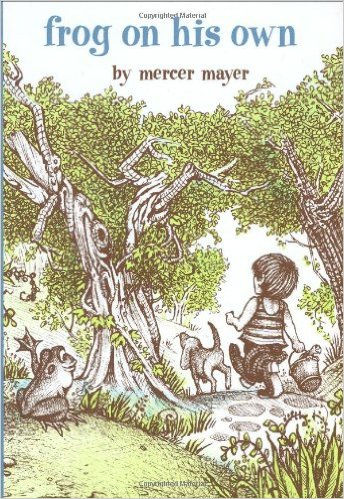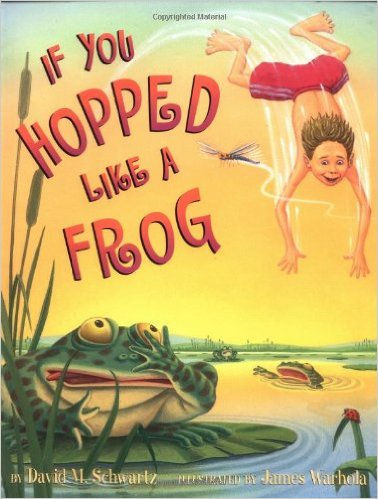The Adventures of Grandfather Frog

*This page contains affiliate links.
The Adventures of Grandfather Frog is a classic story written by Thornton W. Burgess in 1915. The story follows the wise but occasionally stubborn Grandfather Frog as he embarks on a surprising journey filled with valuable lessons.
Grandfather Frog, content with his life in the Smiling Pool, becomes restless after hearing about the exciting world beyond his home. He decides to leave the safety of his familiar surroundings to explore the "Great World." Along the way, he encounters various creatures, both friendly and threatening, including crafty predators like Reddy Fox and Black Snake.
Through a series of misadventures, Grandfather Frog learns the importance of humility, caution, and the value of home. His journey is filled with close calls, clever escapes, and the wisdom imparted by his animal friends.
The story emphasizes themes of curiosity, the consequences of impulsive decisions, and the joy of returning to where one truly belongs. Burgess’s vivid descriptions of nature and the animal characters' personalities make this a timeless classic for young readers.
Introduction
-
Introduce Grandfather Frog
-
Visit my Grandfather Frog page to learn about frogs before reading: discover where they live, what they eat, and how they interact with nature. See photos and watch videos to provide a backdrop to the story.
-
-
Book Overview
-
Show the cover of The Adventures of Grandfather Frog. Ask students to predict what they think the story might be about based on the title and cover illustration.
-
-
Discuss Themes
-
Explain that the book explores themes like curiosity, making wise choices, and learning from mistakes.
-
Discussion
-
Look up the characters in the book your child may not already be familiar with, like Billy Mink and Jerry Muskrat. Let the kids see pictures so they can use their imaginations while listening to the story. Refer to the Animal Character Page for more info.
-
Discuss where Grandfather Frog lives
-
Talk about the difference between tattling and concern (Chapter 3).
-
In several chapters, we see that Grandfather Frog is continually making bad choices due to his stubbornness. Talk about what being stubborn means and how it can lead to trouble.
-
What is the meaning of “Look before you leap”?
Arts & Crafts
Story Stones
Materials: Smooth stones, acrylic paint, and markers.
Paint key characters and objects from the book (e.g., Grandfather Frog, the pond, a dragonfly, or the sun) on stones. Use these as storytelling props to retell the story or create new adventures for Grandfather Frog.

Lily Pad Collage
Materials: Green construction paper, glue, tissue paper, markers, and scissors.
Cut out lily pad shapes and decorate them with tissue paper flowers. Write one word or phrase summarizing a lesson from the book on each lily pad, then arrange them into a pond display.
Science Exploration

Pond Ecosystem Study
Materials Needed: Chart paper, books or online resources, and art supplies.
Research the role of green frogs in pond ecosystems. Have students create a food web that includes frogs, their prey (insects, small fish), and their predators (birds, snakes). Draw or cut out pictures to assemble a visual web.
Frog Call Identification
Materials: Audio recordings of frog calls, computer or tablet, and a chart for recording observations.
Play recordings of different frog species’ calls, including green frogs, and teach students to identify them by sound. Discuss how frogs use their calls to communicate (e.g., mating calls, territory). Have students make a "frog call journal," drawing pictures of the frogs they hear and describing the sounds.

Science-Related Questions
Habitat and Ecosystems
-
What are some features of Grandfather Frog’s pond that make it a good home for him and other animals? What would happen if the pond dried up or became polluted?
Adaptations
-
How do Grandfather Frog’s body parts, like his long legs and sticky tongue, help him survive and find food in his environment?
Life Cycle
-
Grandfather Frog was once a tadpole! Can you describe how a tadpole changes as it grows into a frog, and why these changes are important for living on land and in water?

Building Character
-
Grow “patience candy” (Patience, Ch. 4)
-
Bible based group activities to focus on blessings (Gratefulness and Contentment, Ch. 7)
-
Activities to develop kindness (Kindness, Ch. 13)
-
Team building activities and cooperative games (Teamwork and Cooperation, Ch. 15)
-
Service project ideas for kids (Helpfulness, Ch. 18)
-
Problem solving scenarios for discussion (Problem Solving, Ch. 21)
Character/Moral Questions
- What are some of the challenges Grandfather Frog faces during his adventure? How do these challenges help him learn valuable lessons?
- One of the themes in the book is about learning from mistakes. What mistake does Grandfather Frog make, and how does he grow from it?
- Have you ever been curious about something like Grandfather Frog? Did your curiosity ever get you into trouble or lead you to discover something new?
- If you could give Grandfather Frog advice before he leaves the Smiling Pool, what would you say to him? How do you think he would respond?
- The animals in the Green Forest and the Smiling Pool are part of a community. How do the other animals react to Grandfather Frog’s adventure? What does this tell us about friendship and community?






















